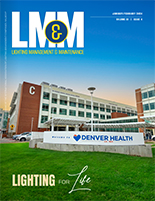Silver Spring, MD—“Heroes of the lighting community” is how the National Lighting Bureau describes its sponsors “whose volunteered efforts and funding made 2010 the most remarkable year in Bureau history.”
According to Howard P. Lewis (Lighting Alternatives, Inc.), the independent lighting-information source’s chair, “The Bureau ordinarily reaches 5- to 6- million lighting decision-makers each year. Last year we reached an estimated 30-million people, more than ever before. We are helping people around the world make good decisions about lighting.”
Mr. Lewis, the Illuminating Engineering Society of North America’s representative on the Bureau’s board of directors, commented that “most people who make lighting decisions – especially when it comes to lighting-system upgrades – are not familiar with some of the technology involved. Nonetheless, because of new government regulations, more people than ever before – including home owners – have to make important decisions about lighting. As a result, the level of interest in lighting is higher than ever before, a fact demonstrated by our media pick-ups.”
Mr. Lewis noted that “the Bureau information was reported in a wide range of print media, in e-zines, blogs, and other online media, and through social-networking media like FaceBook and Twitter.” Mr. Lewis added that Bureau spokespeople were also quoted in a wide variety of “world-leading consumer and trade media including, among many others: AOL Daily Finance,Archi-Tech, Boston Globe, Buildings, CIO, CNBC, Consulting-Specifying Engineer, Denver Post, Engineering News-Record, Entrepreneur, Forbes, Houston Chronicle, Kansas City Star,Reuters, Sacramento Bee, TDAmeritrade, and Yahoo!Finance, in addition to important lighting and electric trade media and 30 U.S. TV stations.”
Traffic to the Bureau’s website – www.nlb.org – increased 25% in 2010, Mr. Lewis reported, “in part because of growing reliance on our lighting-system designer and Commercial-Building Tax Deduction (CBTD) certifier directories. Both directories are free to those listed and to those using the listings.” The website also provides a variety of research information and links, and “continually more visitors are coming to us from outside the United States.” He attributed the new, ohhshore traffic to 2010 coverage of the Bureau by media in Australia, Brazil, Canada, China, England, France, Iceland, India, Indonesia, Japan, South Korea, and Russia.
The National Lighting Bureau has for many years promoted the concept of High-Benefit LightingÓ. A copyrighted Bureau coinage, “High-Benefit Lighting” connotes any lighting system that delivers an array of economic and other valuable benefits because it is “functionally focused”; i.e., designed specifically for the application. Mr. Lewis explained that “the lighting that’s optimal for any given application depends on the functions involved, where they are taking place – the dimensions and finishes of the space involved – and who’s performing them, principally in terms of people’s ages, because older eyes require different lighting conditions.”
Case histories show that optimal functionality boosts lighting’s bottom-line value, by helping people perform seeing tasks faster, with fewer errors; by providing a safer environment, be it in a factory or in a parking lot; by enhancing security; by improving
the appearance of a space or an outdoor area; by lowering liability-insurance costs and boosting retail sales; by increasing curb appeal and lowering unit and space turnover; and even by increasing the value of a building.
“High-Benefit Lighting also has important health benefits,” Mr. Lewis said, pointing to studies showing that effective lighting can delay the onset and slow the progress of dementia. Other studies publicized by the Bureau include one showing that lighting influences how people perceive the taste of different wines.
Mr. Lewis commented that, while lighting-energy efficiency makes important contributions to sustainability, the savings system owners and users derive from energy efficiency is “almost always less than the value they can derive from the other benefits. Somewhat ironically, though, the value of energy savings is all too often the only value considered in deciding whether or not to upgrade an existing lighting system.”
Mr. Lewis was effusive in his praise of the Bureau’s of sponsors. “They’ve been with us through thick and thin,” he said. “They support us financially and through volunteered efforts simply because we provide an important service they want to be associated with. They believe that people need to know about High-Benefit Lighting and what it can do for them and for the environment. Now, to a very real extent, we’re working to provide High-Benefit Lighting to the entire global village



